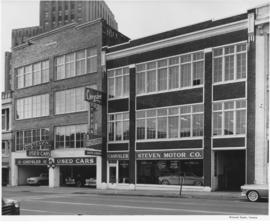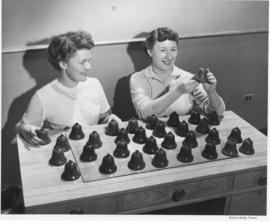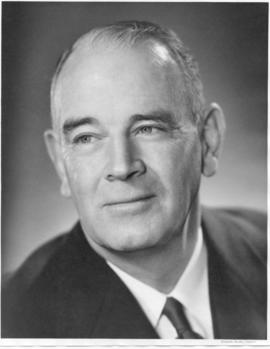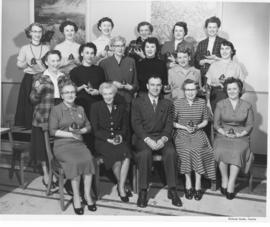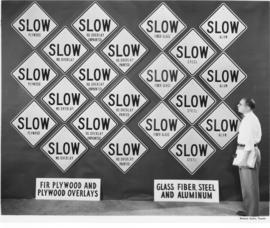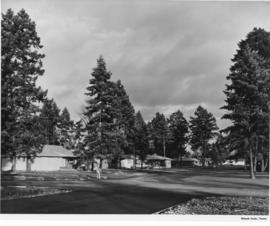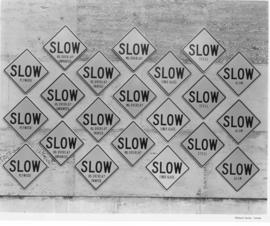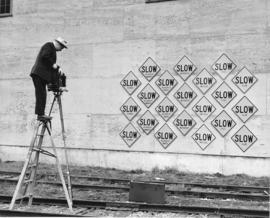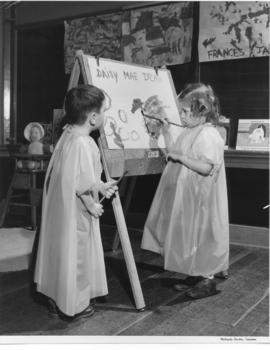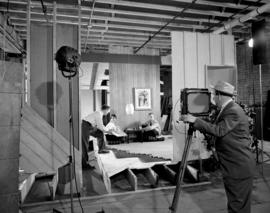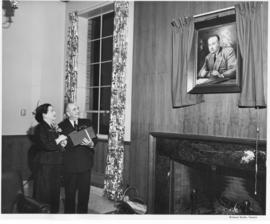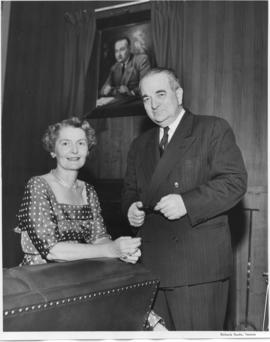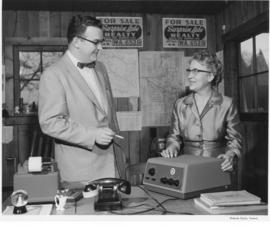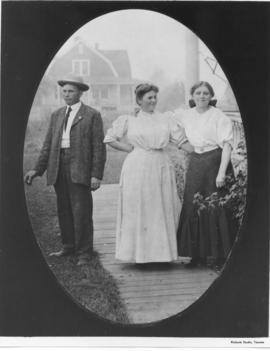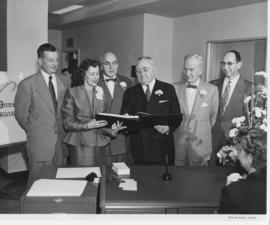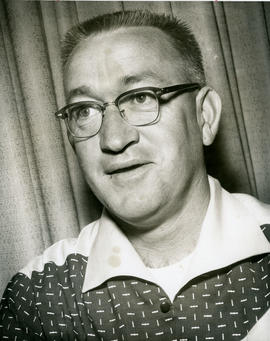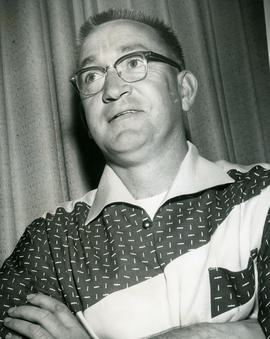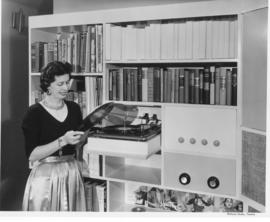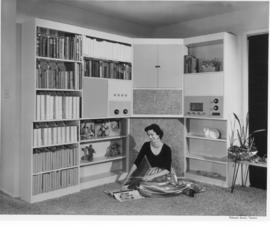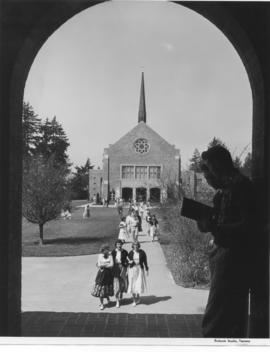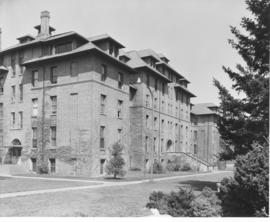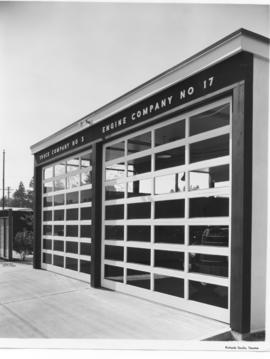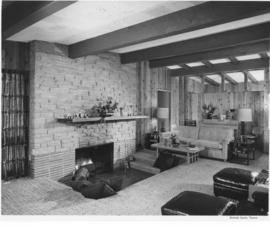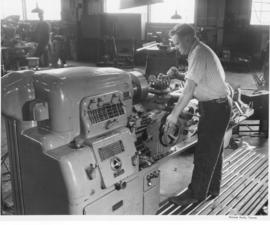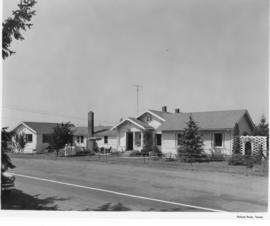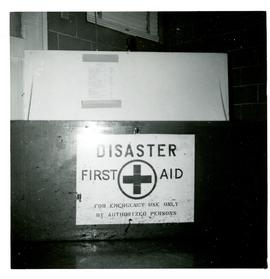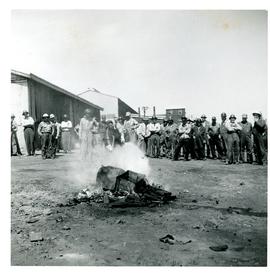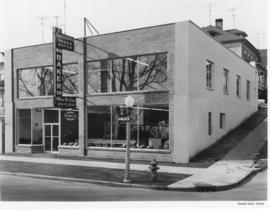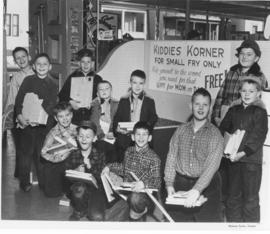Copy of a 1900 era photograph of Gustav A. Carlson for the DFPA. On May 7, 1901, Carlson, F.S. Doernbecher and M. L. Holbrook incorporated as the Portland Manufacturing Co. Capital stock was $25,000 with Carlson holding a half interest. In 1902, Peter Autzen, a Grays Harbor logging man, bought out Doernbecher & Holbrook but remained in Hoquiam while Carlson continued to run the company. The company produced baskets and crates for the fruit and berry trade, as well as coffee and spice drums. In 1905, for the Portland World's Fair, Portland Manufacturing was asked to prepare an exhibit featuring something new and unusual. Carlson, with the assistance of a skilled lathe operator named N. J. Bailey, created glued plywood panels. The panels were rough and time consuming to produce, but orders began to come in from door companies. In September of 1906, Carlson was killed suddenly on a duck hunting trip. Peter Autzen, a financial and sales genius, took over sole management of the company and founded a financial dynasty built on the plywood panel.
Carlson, Gustav A.; Portland Manufacturing Co. (Portland); Douglas Fir Plywood Association (Tacoma); Lumber industry--Tacoma--1900-1910; Clothing & dress--Portland--1900-1910;
